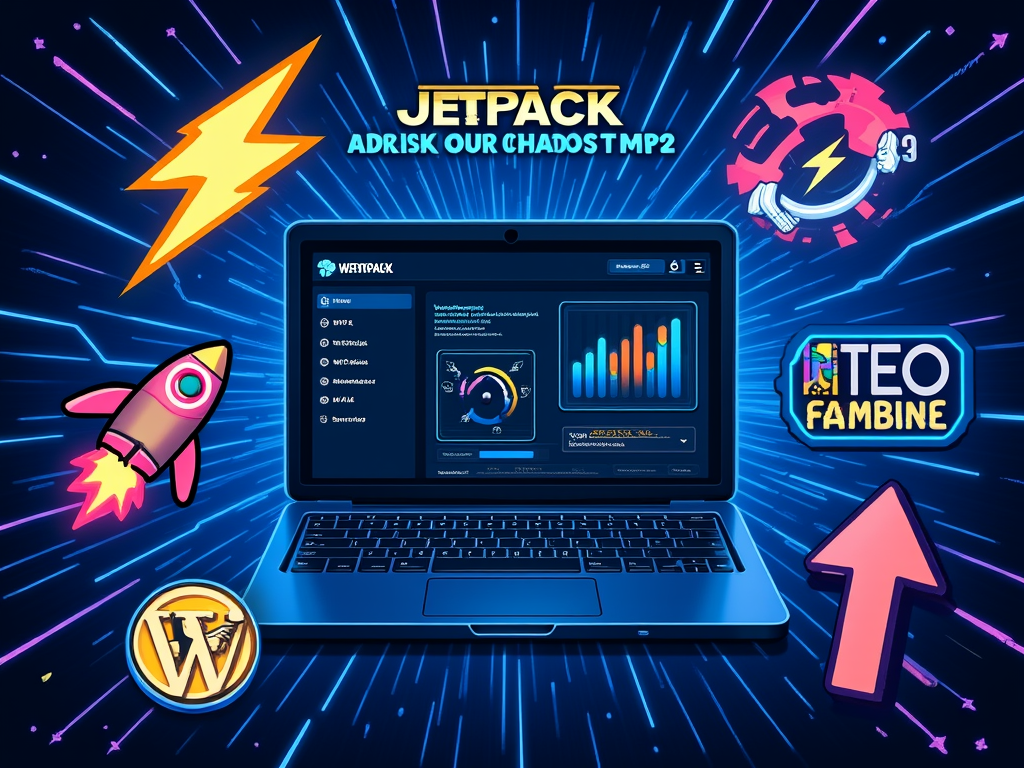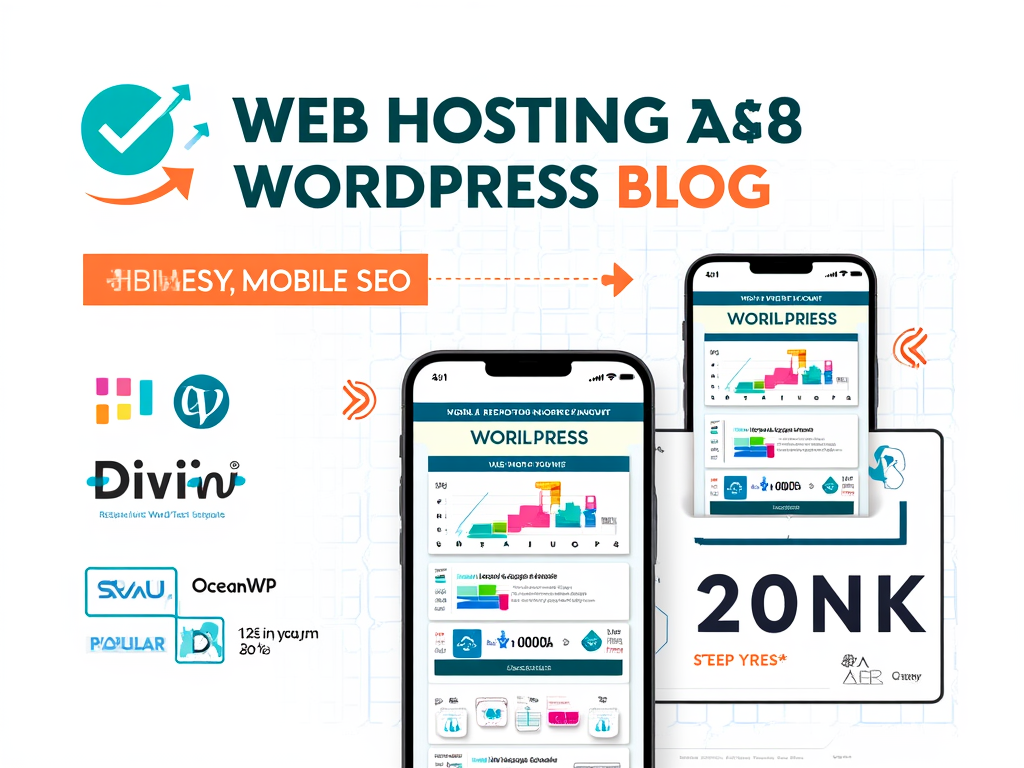<h1>WordPress for multilingual sites: How to</h1>
<h2>შესავალი</h2>
In a world that feels increasingly connected yet distinctly diverse, building a multilingual WordPress site emerges not just as an option but as a necessity. Imagine the vibrant market of potential visitors worldwide and the stories you could share across language barriers. As a small business owner, a budding blogger, or even an established enterprise craving a wider audience, the right strategy can transform your website into a welcoming hub for speakers of multiple languages.
But where do you start? With WordPress’s robust ecosystem, the journey toward creating a multilingual site can be both exciting and daunting. So let’s explore how to navigate these waters and ensure your site speaks the global language of connectivity.
<h2>Understanding Your Foundation Requirements</h2>
Before we dive into the mechanics of translation plugins and language strategies, it’s crucial to lay the groundwork for your multilingual site. Here’s what you’ll need to establish a solid foundation:
<ul>
<li><b>A domain name</b> that resonates with your brand and its global vision. Think of it as the digital welcome mat to your virtual abode.</li>
<li><b>WordPress-ის ჰოსტინგი</b> that’s optimized for speed and reliability. Fast loading times are the unsung heroes of a superior user experience.</li>
<li><b>A reliable multilingual plugin</b> tailored to your specific needs. This is the tool that bridges language gaps, ensuring your messages are conveyed accurately and engagingly.</li>
</ul>
This initial setup will dictate the effectiveness and appeal of your multilingual functionality. Investing time here will pave the way for a smoother navigation experience later on.
<h2>Selecting the Right Multilingual Plugin</h2>
The heart of any multilingual WordPress site lies within its translation plugin. Think of it as the interpreter that allows cultures to converse harmoniously through words and phrases. Several contenders battle for favor in this arena, and each has its strengths:
<h3>WPML</h3>
WPML, the heavyweight champion of multilingual plugins, offers unparalleled versatility. Whether you’re a small blog or an enterprise site, its comprehensive features stand ready to cater to your unique requirements. One standout aspect is its emphasis on performance, ensuring that your site remains swift even as it swells in multilingual content.
<h3>Polylang</h3>
If you’re seeking a budget-friendly option, Polylang shines brightly. It grants solid integration with WordPress without demanding an upfront investment, making it an accessible entry point for newcomers. However, should you wish to unlock certain premium features, you may consider a modest annual fee.
<h3>TranslatePress</h3>
With a user-friendly interface that feels like second nature, TranslatePress captivates with its manual translation capabilities paired with Google Translate. Imagine the ability to see your adjustments in real-time on your site! This hands-on approach can be instrumental for those who are particular about nuances in their translations.
<h3>Weglot</h3>
Weglot epitomizes convenience. Through advanced AI technology, the plugin effortlessly translates entire sites instantly. If you’ve ever wished translation could be as simple as flipping a switch, Weglot brings that dream to life. However, bear in mind that its charm comes at a price—though small sites can take advantage of its free plan.
<h3>GTranslate</h3>
For extensive language coverage with minimal hassle, GTranslate rolls out support for over 100 languages. With the power of Google Translate at its helm, it takes away the pains of configuration, allowing you to focus on what matters most—content and connection.
<h2>Implementation Methods</h2>
With a grasp of the available plugins, let’s roll up our sleeves and dive into the nitty-gritty of implementation. Here are several methods to employ your chosen plugin effectively:
<h3>Using Polylang (Best Free Option)</h3>
<p><b>Step 1: Install and Activate</b></p>
Head over to your WordPress dashboard and click on <b>Plugins → Add New</b>. Search for Polylang, hit <b>ინსტალაცია</b>, and then activate your new tool.
<p><b>Step 2: Configure Language Settings</b></p>
Open the Polylang setup wizard. First, select your default language, the one you intend to speak fluently. Then, from the dropdown, add all the target languages you wish to incorporate—this is your linguistic tapestry.
<p><b>Step 3: Set URL Format for Translations</b></p>
Navigate to <b>Languages → Settings</b> to determine how your multilingual URLs will appear. Subdirectories (like /fr/ for French) or separate domains—each choice bears repercussions on your SEO and user experience.
<p><b>Step 4: Add Language Switcher</b></p>
Head to <b>Appearance → Menus</b> in your WordPress dashboard. By adding a custom link for each language, you create a navigation system that allows your visitors to glide seamlessly between languages.
<h3>Implementing with Weglot (Cloud-Based Approach)</h3>
<p><b>Step 1: Install and Activate</b></p>
Search for Weglot in the WordPress plugins list, install it, and activate it through your dashboard.
<p><b>Step 2: Configure Initial Settings</b></p>
Enter your API key in the Weglot setup wizard. Set your default language and select the languages you want to provide translations for—this process is straightforward but impactful.
<p><b>Step 3: Activate Language Switcher</b></p>
A simple click on <b>Save Changes</b> will automatically activate the language switcher on your website. Picture your visitors being able to change languages with a single smooth motion.
<p><b>Step 4: Manual Translation Refinement</b></p>
While Weglot leaps you into the realm of automatic translations, refinement is key. Use Weglot’s visual or PO-style editors to adjust and fine-tune. For unparalleled quality, think about tapping into professional translation services offered through Weglot.
<h3>WordPress Multisite Network Approach</h3>
For those who want to go all out and create distinct WordPress subsites for each language, consider the Multisite Network approach. This method allows unique content management per language—a true playground for global communication.
<p><b>Step 1: Create Subsites for Each Language</b></p>
From your Network Admin Dashboard, select <b>Sites</b> and choose <b>Create a New Site</b>. Use language codes in the site URL for easy identification, making it simple for users to connect with their preferred language.
<p><b>Step 2: Populate Translated Content</b></p>
Here, you can add translated content independently, ensuring that each subsite maintains its own voice and cultural relevance.
<p><b>Step 3: Establish Language Navigation</b></p>
Finally, return to the main site’s dashboard and navigate to <b>Appearance → Menus</b>. This creates a centralized navigation system that allows users to circulate freely among various language sites.
<h2>Performance Optimization and SEO Considerations</h2>
Even with an exquisite multilingual setup, performance remains a crucial element. Let’s check out how to enhance your website's efficiency and visibility.
<h3>Selecting for Speed</h3>
Performance optimization always starts with understanding how various plugins stack up against one another.
<table>
<tr>
<th>Translation Plugin</th>
<th>Load Time</th>
<th>HTTP Requests</th>
<th>Page Size</th>
<th>DOM Elements</th>
</tr>
<tr>
<td>Polylang</td>
<td>0.712 s</td>
<td>15</td>
<td>79 KB</td>
<td>4</td>
</tr>
<tr>
<td>WPML</td>
<td>Improved significantly</td>
<td>ზომიერი</td>
<td>Lower</td>
<td>ზომიერი</td>
</tr>
<tr>
<td>TranslatePress</td>
<td>1.026 s</td>
<td>22</td>
<td>127 KB</td>
<td>7</td>
</tr>
<tr>
<td>Weglot</td>
<td>Similar to TranslatePress</td>
<td>22</td>
<td>127 KB</td>
<td>7</td>
</tr>
</table>
Polylang and WPML shine with minimal impact on your website’s speed. For users seeking an extra edge, consider pairing your chosen plugin with a powerful caching solution like WP Rocket.
<h3>Implementing Multilingual SEO</h3>
To truly make your site stand out, mastering SEO is pivotal. Hreflang tags become your best friend in a multilingual context, guiding search engines and your audience on what to expect. They prevent the chaos of duplicate content penalties while enhancing your rankings in various regions.
Make it a point to translate metadata and URLs as well, ensuring that your content remains visible to local market searches. As you tailor your keywords for different languages, think about how each audience may differ in their digital search behaviors.
<h3>Managing Translations Effectively</h3>
Lastly, a keen focus on managing translations is vital. Should you take the manual route through plugins like TranslatePress? Great for ultimate control but ask yourself if you have the bandwidth. Automatic tools offer speed, but they require diligent refinement to ensure cultural appropriateness.
The best practice lies in blending automation with professional input, tapping into the human touch when necessary, guaranteeing that your bridge to diverse audiences is not just built but fortified with quality.
<h2>Practical Implementation Checklist</h2>
Before you flip the switch and unveil your beautiful multilingual site to the world, check off this list:
<h3>Before Launch:</h3>
<ul>
<li>Install your chosen multilingual plugin</li>
<li>Configure all target languages in plugin settings</li>
<li>Set URL structure for language identification</li>
<li>Add language switcher to navigation menus</li>
<li>Implement hreflang tags for SEO</li>
<li>Translate and localize all content</li>
<li>Test language switching functionality</li>
<li>Verify page load performance</li>
<li>Check search engine indexing for each language version</li>
</ul>
<h3>Content Management:</h3>
<ul>
<li>Maintain translation consistency across pages</li>
<li>Use professional translators for primary content</li>
<li>Leverage automatic translations for updates</li>
<li>Regularly audit translated content quality</li>
<li>Monitor user engagement by language</li>
<li>Optimize keywords for each market</li>
</ul>
საუკეთესო შეთავაზებები:
გსურთ შექმნათ თქვენი საკუთარი კომპანიის ვებსაიტი ან შექმნათ თქვენი საკუთარი ონლაინ ბიზნესი ინტერნეტში?
– ვებ ჰოსტინგი
– დომენის რეგისტრაცია
– ვებ-განვითარება
– საიტის შემქმნელი



„html“
Testing and Launching Your Multilingual Site
Now that you’ve meticulously set the groundwork and refined your content, it’s time for the critical phase of testing. Think of this as the dress rehearsal before the main event—every detail must align perfectly.
Conducting Usability Testing
Begin by enlisting a diverse group of individuals that encompass your target language speakers. Ask them to navigate your site as if they were regular visitors. Do they encounter any roadblocks when switching languages? Is the content correctly localized? Their feedback will shed light on pain points you might not have considered.
SEO აუდიტი
Even after all the hard work, SEO is an ongoing process. Conduct an SEO audit to ensure that all your hreflang tags correctly point to the right language versions. Tools like მოზ და SEMrush can provide insights into SEO health across languages. Analyze key metrics like organic traffic, rankings, and user engagement to identify areas for optimization.
Post-Launch Strategies
Upon launching your multilingual site, your job doesn’t end. In fact, it’s just the beginning. The key to long-term success lies in continuous engagement and adaptation.
Monitoring User Engagement by Language
Use analytics tools such as Google Analytics to dissect user data by language. What languages are performing best? Are there certain demographics that gravitate toward specific versions? This intelligence enables savvy business decisions, from content creation to marketing strategies.
Regular Content Updates
Consistency is crucial to keeping your audience engaged. Schedule regular content updates, ensuring translation accuracy and relevance. Engage professionals when necessary for nuanced content, keeping in mind that languages evolve. Stay connected with native speakers to grasp shifts in cultural context.
Challenges and Solutions
Operating a multilingual WordPress site comes with its own unique set of challenges. But fear not; understanding common pitfalls will aid you in crafting solutions.
Cultural Sensitivity
Each language market carries its own cultural traits. What works well in one culture may not vibe in another. To prevent misunderstandings, consider local customs, idioms, and humor while translating and marketing your contents. Keeping your content culturally relevant minimizes risks of alienation.
Plugin Compatibility and Updates
With numerous plugins facilitating translations, sometimes conflicts arise, causing distress in functionality. To mitigate this, ensure that all plugins are regularly updated and compatible with your current version of WordPress. Implement a rigorous testing routine before significant updates. For references on compatibility, do keep a lookout for plugin changelogs.
Incorporating Advanced Features
As you become more adept at managing your multilingual site, consider incorporating advanced features to enrich user experience.
Chatbots and Live Support
Imagine implementing a multilingual live chat support plugin. Service options available in users’ preferred languages can significantly enhance user interaction, making your visitors feel valued. Tools like Tawk.to provide free integration to add conversational capabilities to your site.
Content Personalization
Use data-driven approaches to personalize content based on language preferences and visitor behavior. Personalized content can increase conversion rates significantly. A platform like ოპტიმალურად could prove invaluable for A/B testing strategies on different language versions to gauge engagement.
დასკვნა
Creating a multilingual WordPress site is more than a technical endeavor; it’s about building bridges and forming connections across cultures. From the initial setup of your plugin to harnessing advanced features, the journey may appear long, but the rewards are undeniably worthwhile. Each translated phrase brings you one step closer to reaching a broader audience and sharing your story with the world. So gear up and embrace this opportunity to connect, engage, and thrive in a global digital landscape.
დამატებითი რესურსები
To deepen your understanding and skills related to WordPress multilingual sites, check out these insightful videos:
- How to Create a Multilingual WordPress Website
- Setting Up WPML for Multilingual Sites
- Using Polylang to Translate Your Website
“`
საუკეთესო შეთავაზებები:
გსურთ შექმნათ თქვენი საკუთარი კომპანიის ვებსაიტი ან შექმნათ თქვენი საკუთარი ონლაინ ბიზნესი ინტერნეტში?
– ვებ ჰოსტინგი
– დომენის რეგისტრაცია
– ვებ-განვითარება
– საიტის შემქმნელი








